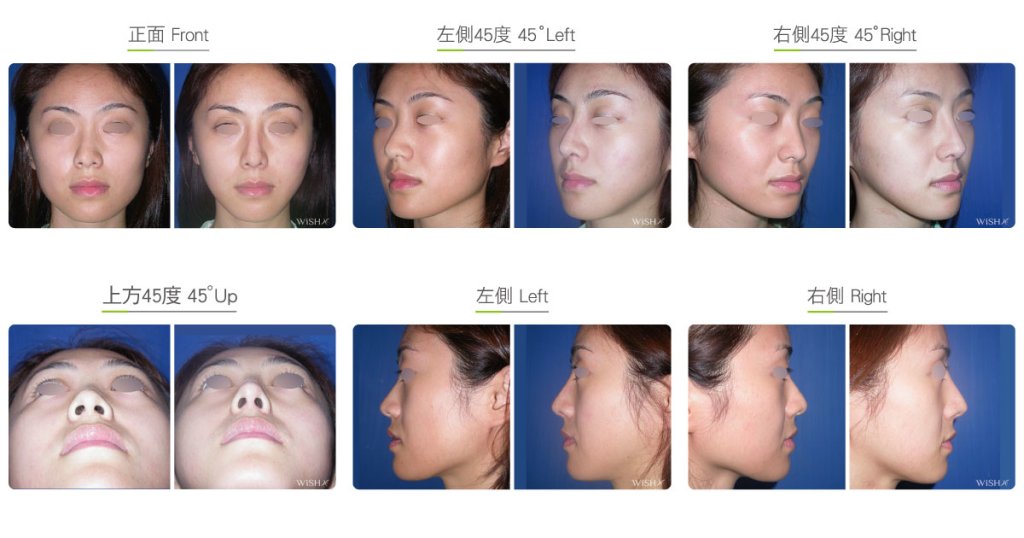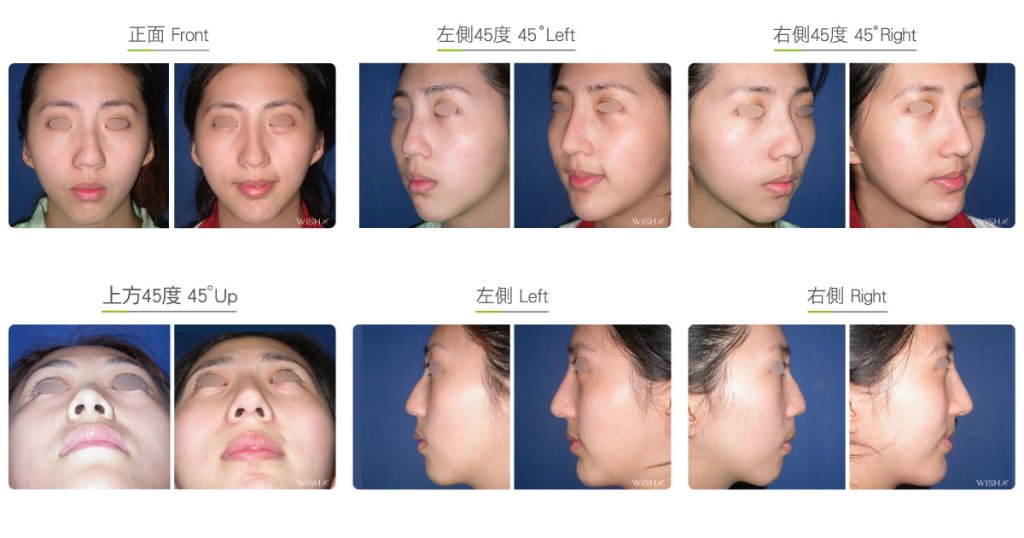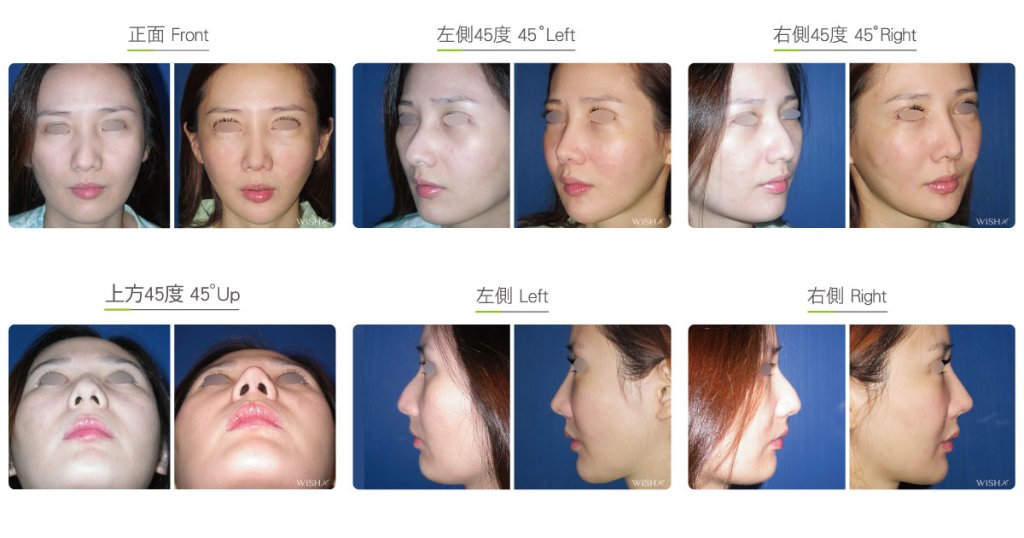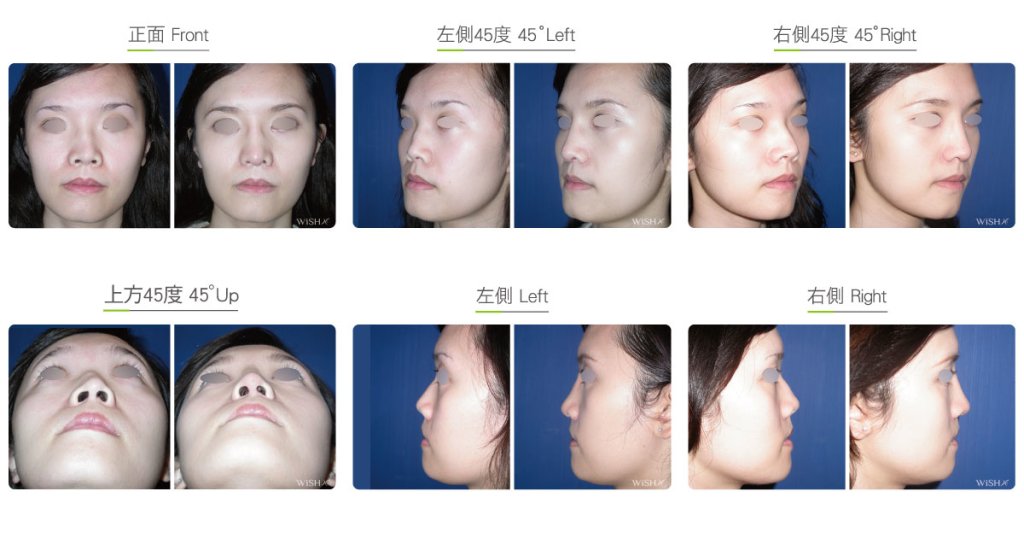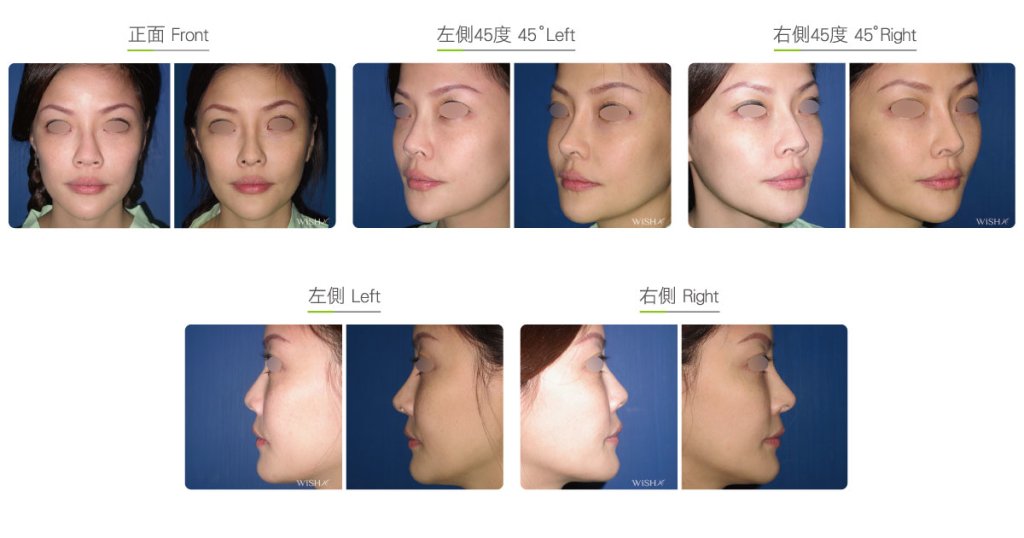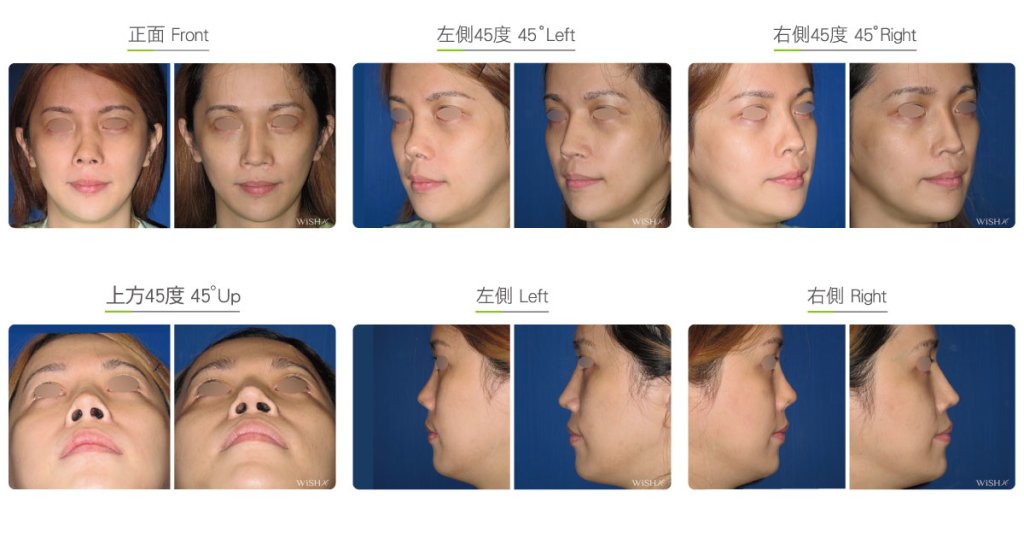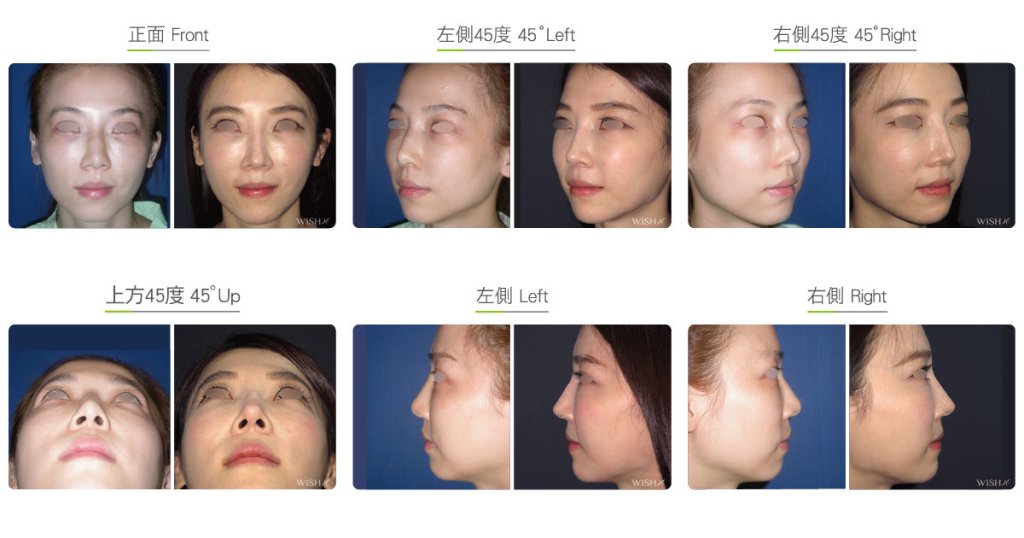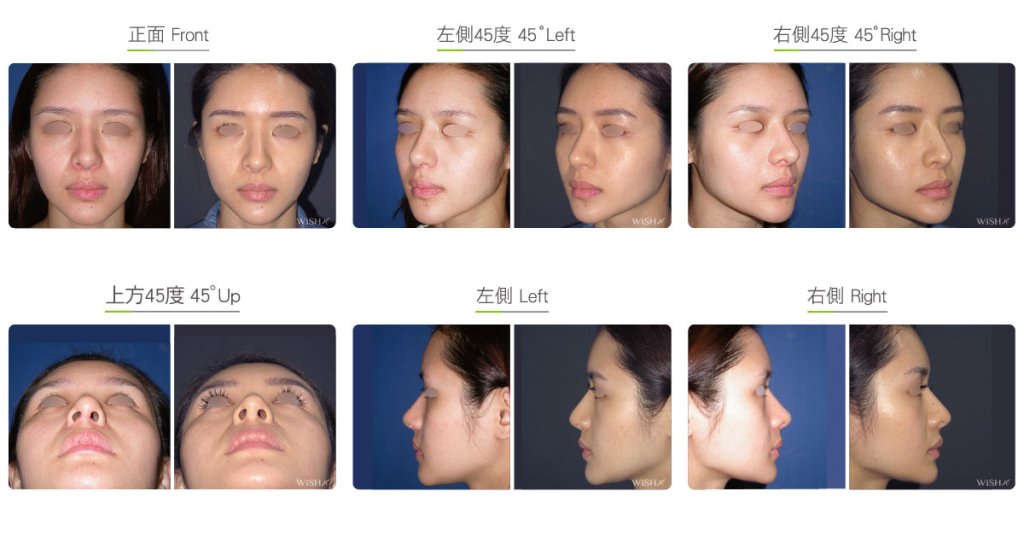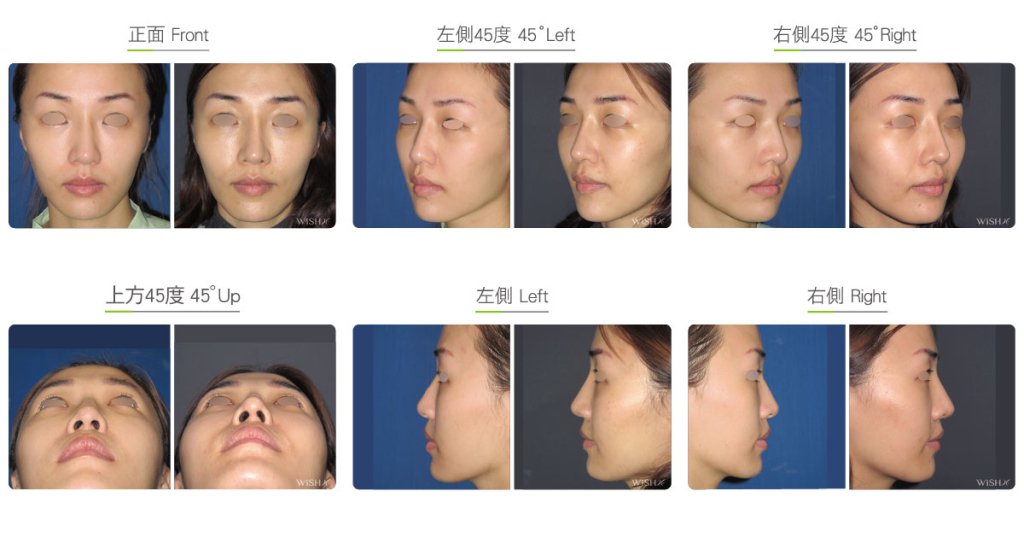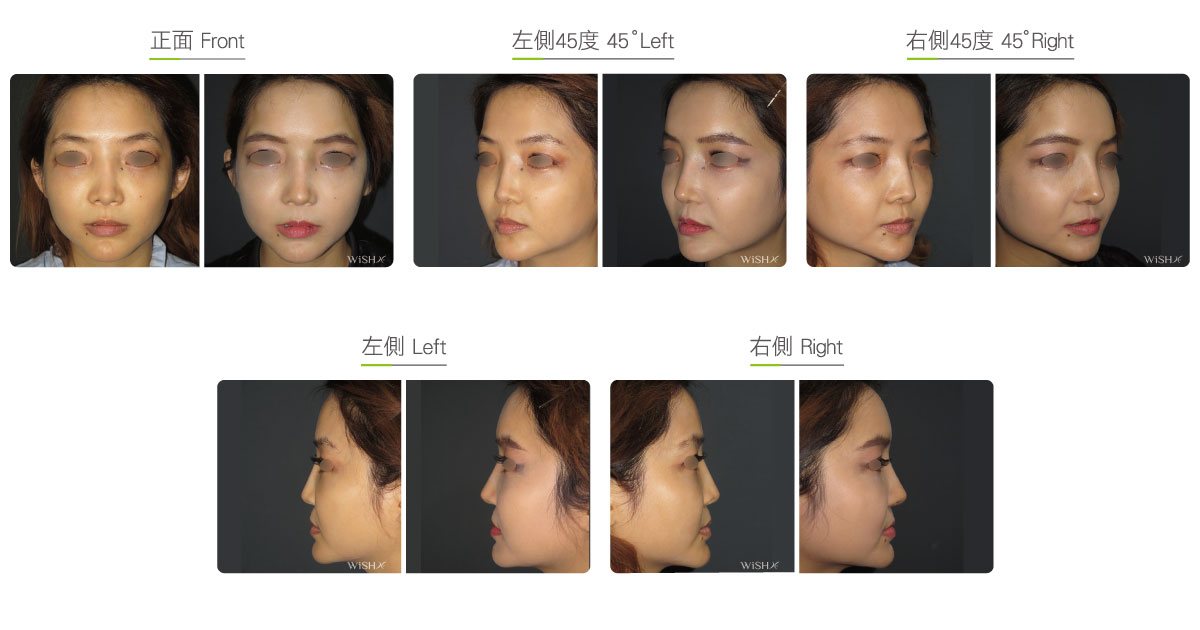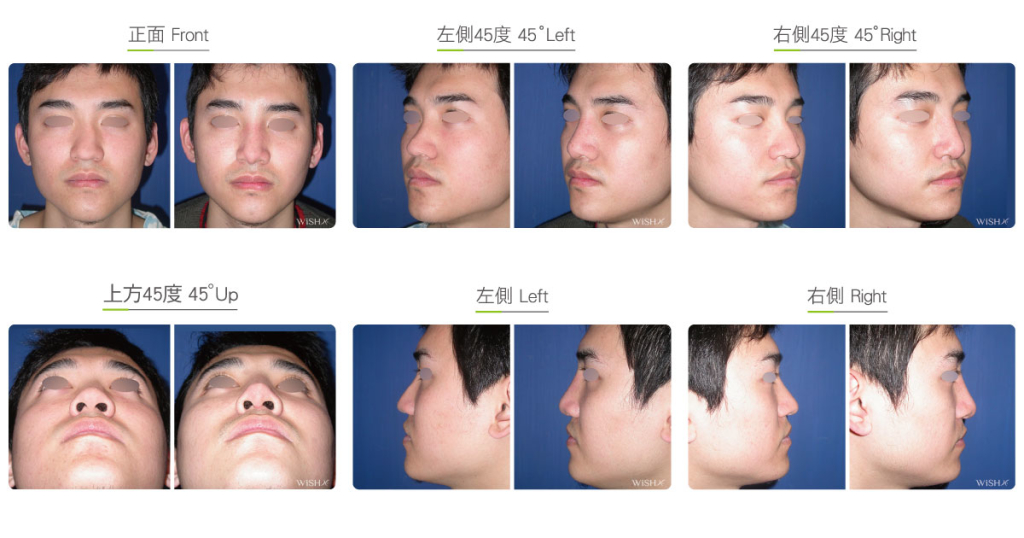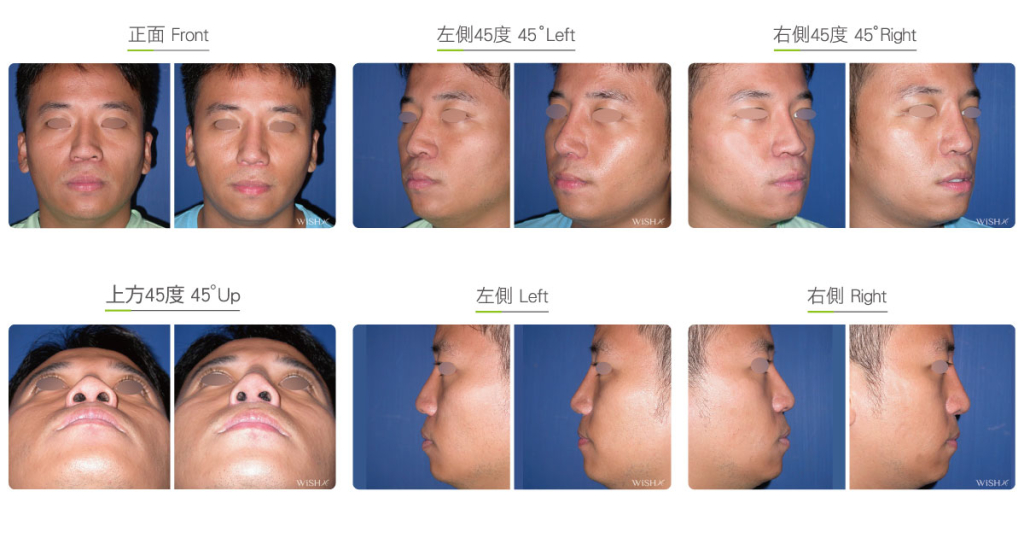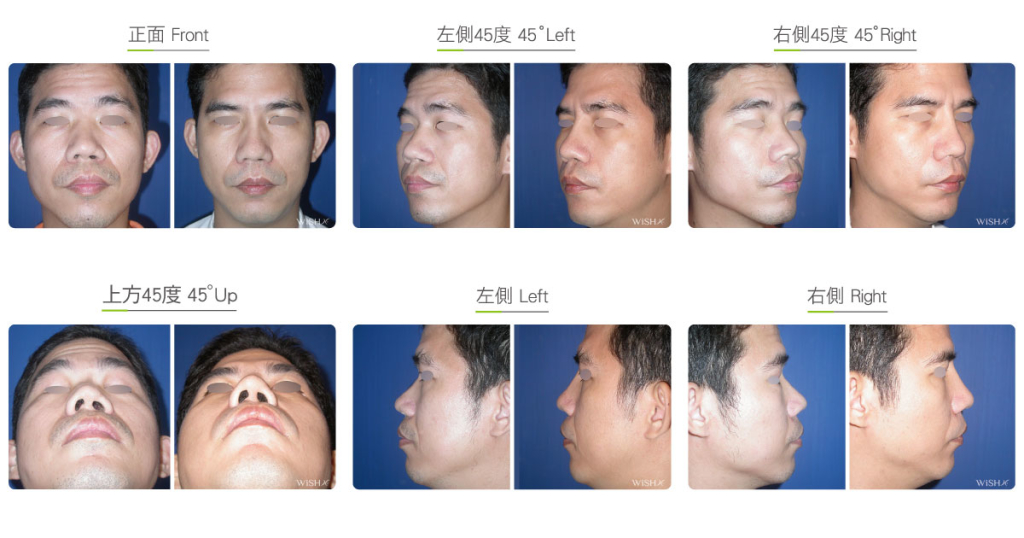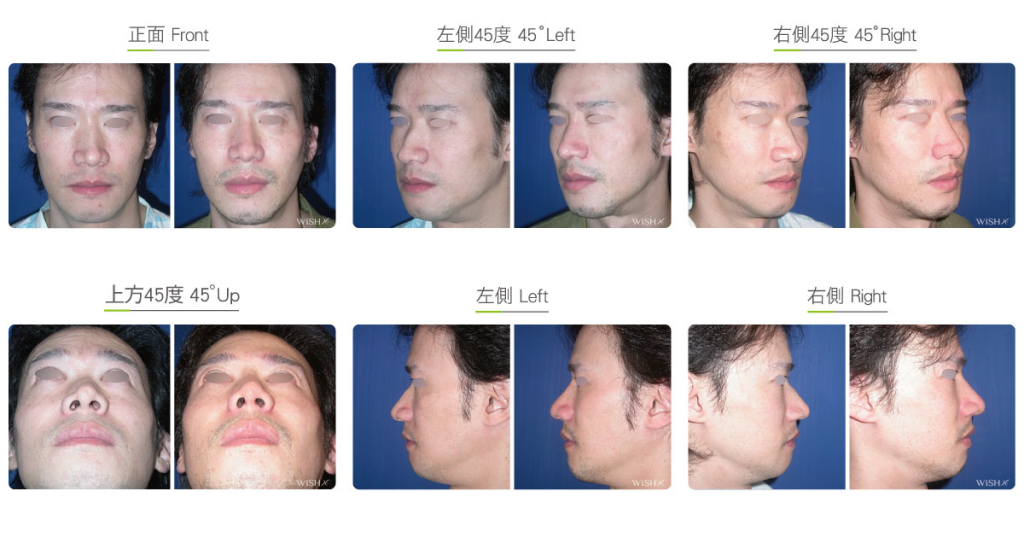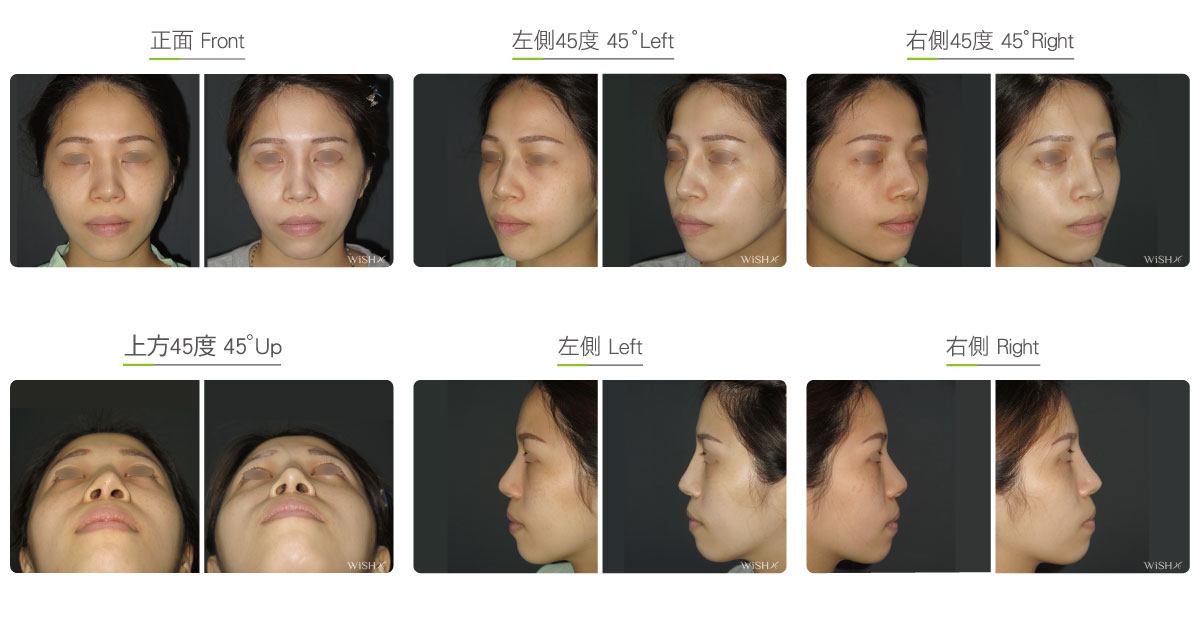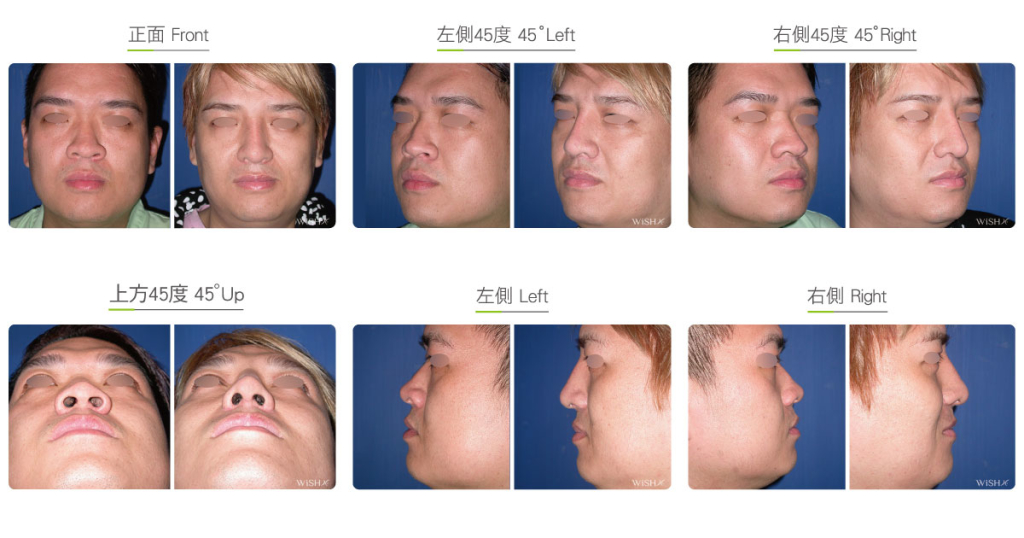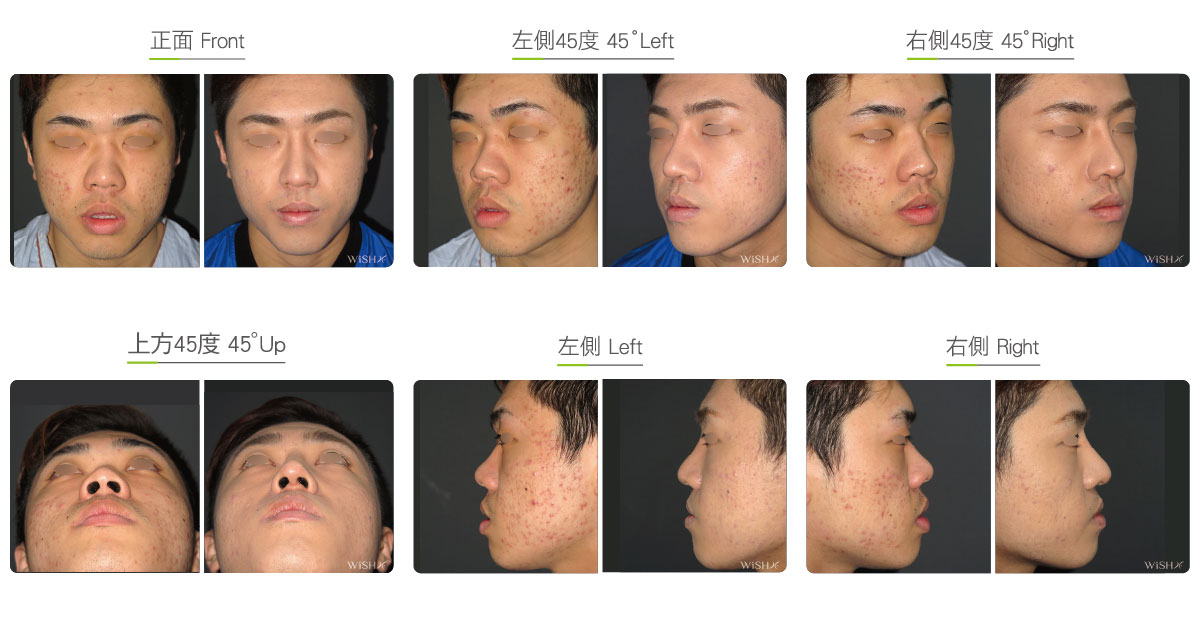Nasal bone correction
This is also called nasal bone reduction, and it corrects the basal nasal bone deviation prior to the emplacement of rhinoplasty prosthesis. Nasal osteotomy is aimed at narrowing the nasal bones to sculpt a delicate nasal bridge and then correcting the deviated nasal bones to avoid nasal bridge shift after the emplacement of the prosthesis. Structurally, the nasal bones only account for the superior one-third segment of the overall nasal bridge and are made up of two thin flakes that are osseum and ridge shaped. It measures only 1.5 mm on an average but bears the development and projection of the overall nasal bridge and also guides the development of the inferior two-thirds of the nasal septum. Therefore, nasal bone deviation and nasal septal warping (deviation) often concurrently occur, so if necessary, the nasal septal deviation should also be corrected. Generally, normally developed nasal bones are fixated prior to the age of 18 years and present the following disorders:
- Excessively broad or flat nasal bone
This is a hereditary problem and is mostly observed in patients with a broad zygomatic bone, typical of an exceedingly wide middle segment of the nasal bone from the frontal view and an overall bridge looks like a Coca-Cola bottle or gourd. Concurrent nasal septal collapse or depression (saddle nose) is occasionally reported. This type of nose predominantly presents with normal functions and generally only necessitates appearance correction. - Congenital nasal bone deviation
This results from an unequally developed bilateral face (asymmetrical face) and is frequently complicated by nasal septal warping, nasal obstruction, or even upper palate bone shift. This type of nose is characterized by obviously unilaterally oriented warping or deviation of the nasal bridge from the frontal view and misalignment of the central glabella and supratip (philtrum) as well as the bilateral ala nasi and nostrils with asymmetrical size and shape. Corrective procedures are relatively complex. - Traumatic nasal deviation
This refers to nasal warping caused by external impacts; its severity varies along with the time of trauma. Generally, the younger the patient is, the more obvious are the effects. Such a nose shape typically demonstrates that the inferior nasal septum is normal but that the superior nasal bridge deviates at the affected site, thus giving an appearance of C-shaped warping. A traumatic nasal deformity is restored by a closed nasal reduction within 2 weeks; otherwise, it should be adjusted by subsequent nasal corrective osteotomy by making an open incision.
In spite of the fact that nasal osteotomy is independently performed for the restoration of nasal bone trauma, it is mostly performed in conjunction with open (Korean-style) rhinoplasty to achieve esthetic result. Generally, Dr. Chuang evaluates whether the nasal bones are properly located for every patient undergoing rhinoplasty before the operation, and if necessary, he would recommend simultaneous nasal bone correction to obviate the deviation or shifting of the emplaced prosthesis, thus resulting in satisfaction. Nasal bone surgery (lateral or corrective osteotomy) comprises the following parts:
- Nasal bone reduction (lateral osteotomy)
The exceedingly wide nasal bones are cut at both connecting ends with the maxilla and are medially compressed, which makes the nasal bridge appear both straight and slim. The incisions are inside the nostril and imperceptible, while the crevice at the compression site automatically proliferates the bones and becomes fixated, which regains preoperative strength after approximately 1 month. - Nasal bone straightening (corrective osteotomy)
The surgical method is the same as nasal bone reduction. Despite flexible adjustments of bilateral osteotomy paths due to the degree of deviation, the ultimate objective is to restore and fixate the deviated two flakes of bones to the midline, thus ensuring the accuracy of the emplaced prosthesis. Sometimes, the nasal septal deviation should be simultaneously corrected (septoplasty).
Nasal bone correction does not extend the recovery of overall rhinoplasty but results in more bruises or swelling. Therefore, a customized thermoplastic plaster splint should be postoperatively worn for 1 week to stabilize the nasal bridge.
Surgical conditions
Duration
- Type of anesthesia: General anesthesia
- Surgical incision: At the bottom of the nasal columella and inside the bilateral nostrils
- Recovery: 5–7 days
- Removal of stitches: 7 days
General instructions
No food and water on the day of surgery
- Wear a plaster splint for 1 week postoperatively to stabilize the nasal bridge.
- Avoid smoking and alcohol and impacts to the nasal tip for 3 months postoperatively, and clean the intranasal wound in the morning and evening every day.
- Abstain from eating raw food, seafood, and irritating food or spices for 3 months postoperatively.
- Avoid exposure of the nostrils to dirty water (sea water, swimming pool or sauna water, and hot springs) and close contact with pets and dust mites for 3 months postoperatively.
Ideal candidates
- Patients with a congenitally broad and flat nasal bone
- Those with congenitally asymmetric faces that cause nasal bridge deviation or concurrent nasal septal warping
- Those with nasal bridge deviation or shift due to traumatic impacts
- Those with mild nasal bending leading to the displacement of the emplaced nasal bridge prosthesis
- Those who want to have a more stereoscopic and refined nasal bridge via rhinoplasty
Potential complications
- Temporary nasal obstruction
- Disturbance in respiration
- Nasal bone collapse and asymmetry
- Nasolacrimal duct obstruction
Surgical advantages
-
It is able to narrow the nasal bridge and improve the subtleness of the nose.
-
It resets the crooked nasal bones to avoid shifting of the emplaced prosthesis.
-
It is able to sculpt bilateral nasal shadows and increase the projection and definition of the nasal bridge.
-
It is able to partially correct nasal septal deviation.
Surgical drawbacks
-
There is relatively obvious postoperative swelling and bruises.
-
It is probably more painful than general rhinoplasty.
-
There is a likelihood of postoperative temporary or recurrent nasal obstruction.
-
Over-reduction may cause a disturbance in respiration or difficulty in cleaning the nostrils.

